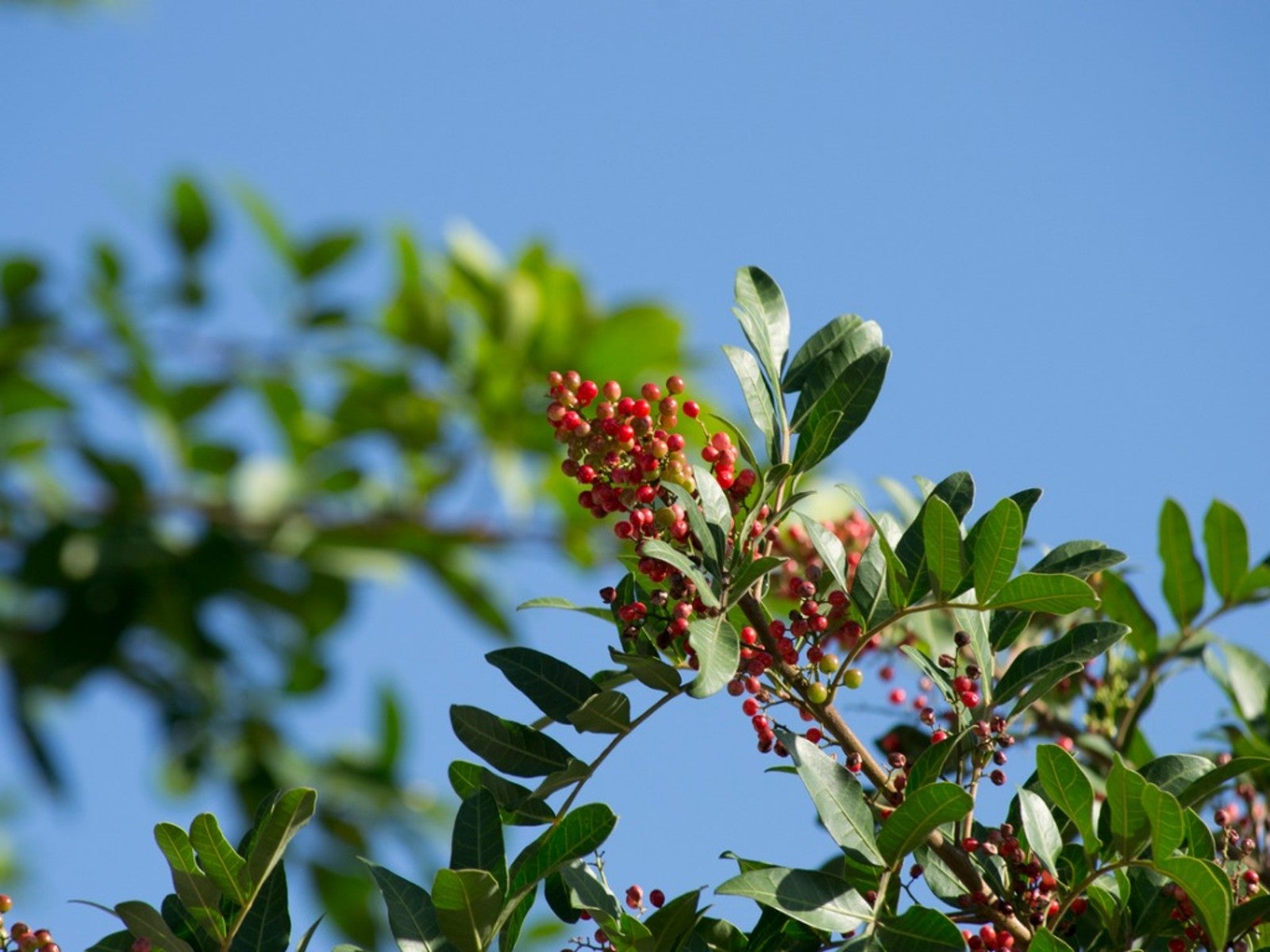Mastic Tree Information: Learn About Mastic Tree Care


Many gardeners are not familiar with the mastic tree. What is a mastic tree? It’s a small to medium-size evergreen native to the Mediterranean region. Its branches are so limber and flexible that it’s sometimes called “the yoga tree.” If you are thinking of growing a mastic tree, you’ll find plenty of tips here to help you get started.
What is a Mastic Tree?
Mastic tree information describes the tree as a small evergreen in the Sumac family with a scientific name Pistacia lentiscus. It grows fairly slowly to a maximum of 25 feet tall (8 m.). Unfortunately for those with small gardens, this attractive tree has a spread even greater than its height. That means it can take up a lot of space in your backyard. However, it works well as a background screen tree.
You won’t be bowled over by the mastic tree flowers. They are inconspicuous. That being said, the tree develops clusters of mastic berries. Mastic berries are attractive small red fruits that mature to black.
Additional Mastic Tree Information
If you are thinking of growing a mastic tree, you’ll need to know that the tree prefers a warmer climate. It thrives in U.S. Department of Agriculture plant hardiness zones 9 through 11.
Some of the most interesting facts you learn when you read up on mastic tree information concern the many uses for the tree’s gum. Gum mastic—raw mastic resin—is a high-grade resin cultivated on the Greek island of Chios. This resin is used in chewing gum, perfume, and pharmaceuticals. It is also used in adhesives for dental caps.
Mastic Tree Care
Mastic tree care starts with proper placement. If you plan on growing a mastic tree, plant it in a full sun location. It also requires well-drained soil, and occasional deep irrigation is an important part of its care.
You’ll also need to prune this tree early in order to help it form a strong branch structure. Gardeners prune lower branches to elevate the base of the tree canopy. It’s also good to train the mastic to multiple stems. Don’t worry—the tree has no thorns.
Gardening tips, videos, info and more delivered right to your inbox!
Sign up for the Gardening Know How newsletter today and receive a free copy of our e-book "How to Grow Delicious Tomatoes".

Teo Spengler is a master gardener and a docent at the San Francisco Botanical Garden, where she hosts public tours. She has studied horticulture and written about nature, trees, plants, and gardening for more than two decades. Her extended family includes some 30 houseplants and hundreds of outdoor plants, including 250 trees, which are her main passion. Spengler currently splits her life between San Francisco and the French Basque Country, though she was raised in Alaska, giving her experience of gardening in a range of climates.
-
 Try The Trend – Turn Any Bed Into A Keyhole Garden With This Clever In-Ground Composter
Try The Trend – Turn Any Bed Into A Keyhole Garden With This Clever In-Ground ComposterKeyhole gardening is an efficient and sustainable practice that saves space. Get started on this DIY project quickly and easily with an in-ground composter.
By Bonnie L. Grant
-
 4 Superfast Composting Methods: Turn Waste Into Garden Gold In 30 Days Or Less
4 Superfast Composting Methods: Turn Waste Into Garden Gold In 30 Days Or LessTry the fastest composting methods to turbocharge your pile and transform kitchen scraps and garden waste into finished compost in just a few weeks.
By Mary Ellen Ellis